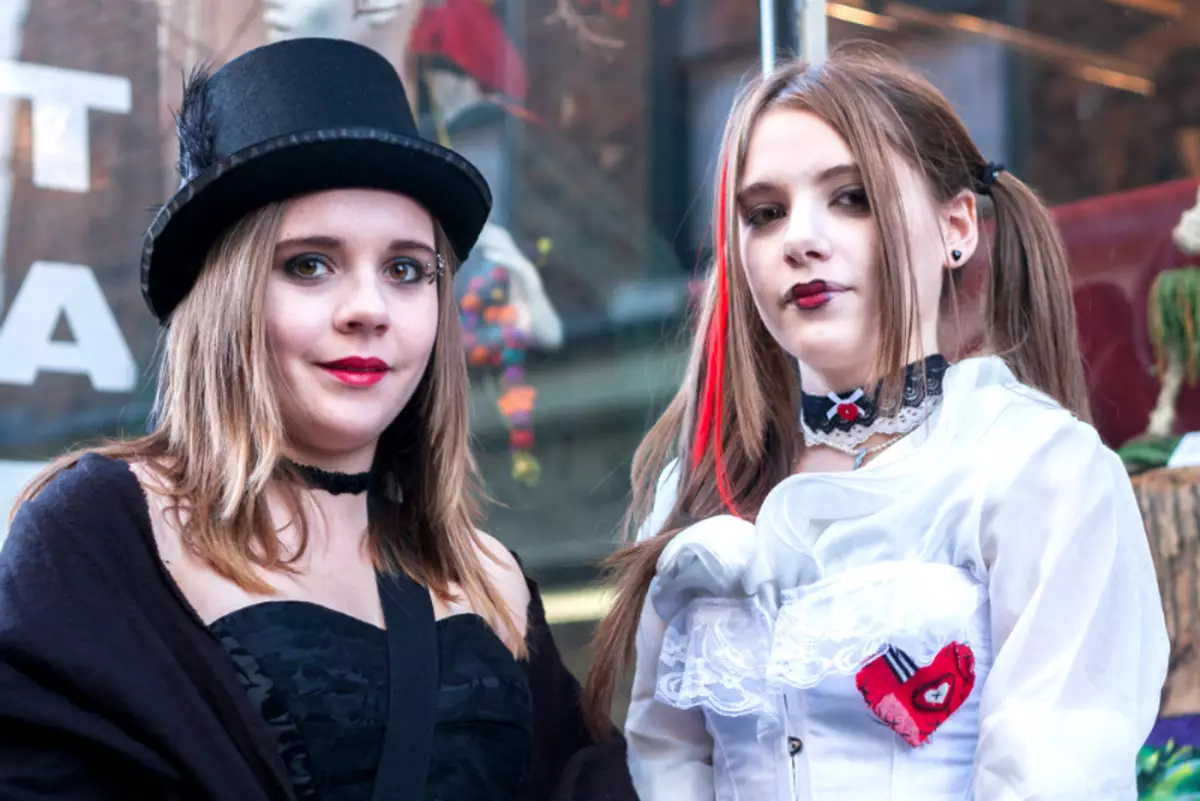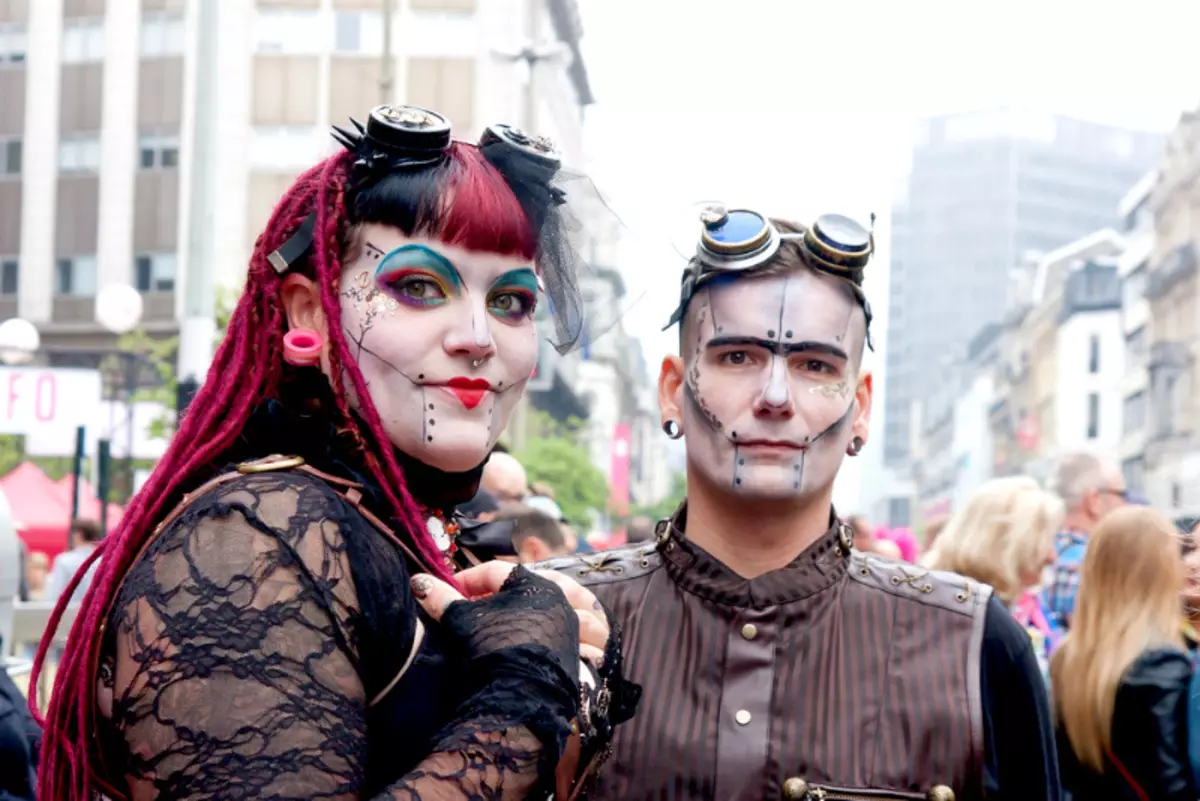For most foreign people, belonging to Goths or any other subculture is similar to life in a fairy tale - unusual clothes, an unusual pastime. And at a certain age it is. When you are a teenager, and you have neither adult duties, nor adult responsibility, you live almost in a fairy tale, because you have, when you have to express yourself, facing only problems with all the teenagers.

It is interesting in this light to look at a sociological study regarding subcultures and how the goths change over time and how cultivation affects their lives. The focus of studies were people who were goths in his youth and how much they remained correct to their gothic image and views a few years later.
What happens when the teenager grows? Finds work, takes a mortgage, will bounce a couple of kids ..? Is it possible to combine the intricate makeup in the style of Frankenstein and corset with lacing with the presence in your life ready for the kindergarten three years and the need for a full-fledged working week?
To understand this issue, Dr. Paul Khodkinson, deputy head. Department of Sociology of the University of Surrey (United Kingdom) and expert on youth musical subcultures, conducted a repeated survey of the group ready, with whom he met in the late 90s. "They were then teenagers or a little older than 20 years, and I thought it would be interesting to return to this topic, because some of them continue to be part of the world ready," he explained.

According to Khodkinson, although many adherents of such subcultures as punks or ravers leave from there soon after reaching the twentieth age, in the case of Gotami, it is more likely that, becoming older, they will want to stay true to their style, despite the fact that combining him with the duties and Problems that appear with age becomes not so easy.
For manuals, the main visual marker is ready - long, painted in black hair, black clothes, a pale face contrasting with densely suspended black expressive eyes. From themselves these attributes, it would seem fairly easy to refuse. However, Khodkinson notes that although the clothes and aesthetic trends are important, the priority factors of the inclusion in the subculture are "the commitment of gothic music and style, and some goths may say that they are interested in the dark side of life and the natural desire for the knowledge of the depths of the dark side of human nature."
This implies a certain level of devotion to the Gothic movement. Your self-consciousness and your friendships add up around the fact that you are Goth / Gotesse. As a result, your gothicity begins to influence the interaction with the outside world, which "to stop it is felt like a certain absurdity," he says.

Continuing the formation and acquisition of "normal work" for those who remain goths are not as hard as for representatives of other youth subcultures, some of which will promote a "riot against system" and schools as a screw of the system, which is virtually inevitably begins to suffer academic performance.
"To be goth is relatively not cheap hobby, so ... Despite the passion for music and parties, the goths have always made a positive impression, and very fair, people seeking to successes in studies."
From this it follows that the goths have the opportunity to build their careers much more successful than the man can expect. Successes on the chosen career path, according to the study of Khodkinson, are becoming increasingly important for his respondents, as they cease to be 20 and becomes 30.

The scientist was surprised how participants in his research was sought to fit their "working" appearance under the requirements of the employer. "I even offered respondents to the situation in which they could not continue to wear some specific things to work. I expected that they decide to quit, but they answered that they would prefer to seriously think about. "
Moreover, most of the participants in the study said they are still perceived at work as goths, although they began to look less damage. "They retained some details of their appearance, although they realized, for example, that painted in bright and unnatural color hair are not suitable for the working environment, or ceased to paint the nails with black varnish."
Some of the young people respondents, children now have children, and he notes that another sign of the desire to remain in subculture, despite such cardinal changes in life, is the recent appearance of sites where the specific problems of Gothic families are discussed (where to find a black stroller, From what age can you take with you to the festival, how to get off from overly concerned relatives who believe that the "twirl", and therefore it is already time to "be cooled", or that the child needs to be baptized, so as not to become Satanist, and the black color is oppressed On the psyche of the baby - approx. Trans.).

More and more parents are ready to bring children to thematic festivals with them, Khodkinson notes, "that makes the organizers think about the strategy that takes into account the presence of children and the provision of services necessary for parents." The scientist calls the ready "very hedonistic youth subculture" caring for the presence of children's groups and professional nanny at the festivals, whose services are all increasing demand among the older.
These guys found a way to "grow along with their children and acquire the features of" adults, prudent and coated "a little later than everyone else, while remaining the team of people united by one passion and supporting each other," summarizes Khodkinson.
A source
Photos: jolig / shutterstock.com, stevesimonsphotography / shutterstock.com
Translation: Elena Mitsa, Black Milos
(from the editors: yes, these are goths)
